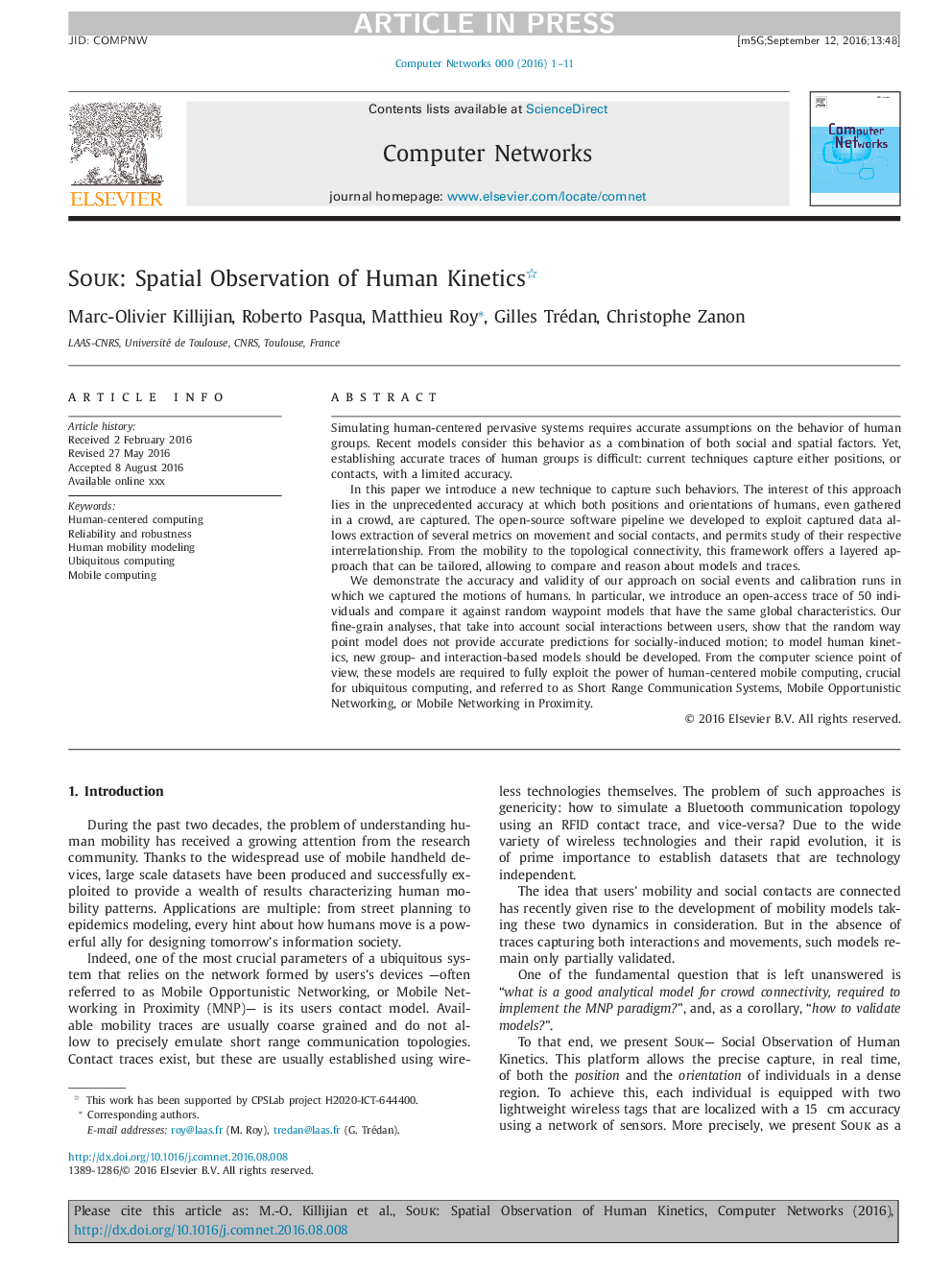| Article ID | Journal | Published Year | Pages | File Type |
|---|---|---|---|---|
| 4954815 | Computer Networks | 2016 | 11 Pages |
Abstract
We demonstrate the accuracy and validity of our approach on social events and calibration runs in which we captured the motions of humans. In particular, we introduce an open-access trace of 50 individuals and compare it against random waypoint models that have the same global characteristics. Our fine-grain analyses, that take into account social interactions between users, show that the random way point model does not provide accurate predictions for socially-induced motion; to model human kinetics, new group- and interaction-based models should be developed. From the computer science point of view, these models are required to fully exploit the power of human-centered mobile computing, crucial for ubiquitous computing, and referred to as Short Range Communication Systems, Mobile Opportunistic Networking, or Mobile Networking in Proximity.
Related Topics
Physical Sciences and Engineering
Computer Science
Computer Networks and Communications
Authors
Marc-Olivier Killijian, Roberto Pasqua, Matthieu Roy, Gilles Trédan, Christophe Zanon,
